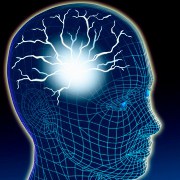 Photo: Getty Images
Photo: Getty Images
Peptides? Amino acids? And what in the world is substance P? Sounds like a name for a rapper.
Do you need to be able to understand these terms to overcome your pain? If you'll pardon the pun, it couldn't hurt.
A peptide is a small chain of amino acids. Okay, stumped already. What is an amino acid?
Amino acids come from protein in foods. During digestion, protein is broken down into short chains of amino acids and individual amino acids, which are absorbed into the bloodstream.
They are essential for human life, being used, for instance, in brain function and hair growth as well as the repair of muscle tissue.
A neuropeptide is a small chain of amino acids that affects the nervous system. Neuropeptides participate in our sensations and emotional responses.
Simplified, a neuropeptide is involved in our pain, pleasure, hunger and thirst.
Endorphins are feel-good compounds. Substance P, on the other hand, heralds pain. Endorphins and substance P are a couple of examples of neurotransmitters which allow nerve cells to communicate with each other.
Substance P originates in the brain and spinal cord. It binds to a molecule that passes on substance P's signal of pain from the joints, muscles or skin to the central nervous system. The ultimate destination is the brain where the message of pain is read.
Substance P also plays a role in transmitting messages of anxiety, nausea and stress. In fact the part of the brain stem governing vomiting has high levels of SP. And it is speculated that high levels of SP in the spinal cord may cause unusually intense awareness of pain in disorders like fibromyalgia.
A December 21, 2010 article published on physorg.com reported that research concerning capsaicin can have a significant modifying effect on substance P.
Capsaicin is what makes chillies so hot and spicy. Capsaicin has been used successfully in the treatment of chronic pain.
This research has led to new insights into the way that capsaicin influences substance P and its effects on the body. Dr. Alasdair MacKenzie, leader of the project, stated that 88 percent of inherited diseases like arthritis, dementia, depression, heart disease and obesity may be caused by improperly functioning genetic switches.
Finding switches which affect the substance P gene will help researchers learn more about the origins of pain and how to overcome it.
The research was performed at the University of Aberdeen in the Kosterlitz Centre for Therapeutics. It was published in the journal Neuro-signals.
Resources:
What Is Substance P?
http://www.wisegeek.com/what-is-substance-p.htm
Genetic switch discovered that turns on pain
http://www.physorg.com/news/2010-12-genetic-pain.html
Neurochemical Substance P is Key to Understanding Pain Process
http://www.prohealth.com/library/showarticle.cfm?libid=7964
Causes and Treatment of Fibromyalgia
http://www.ei-resource.org/articles/fibromyalgia-articles/causes-and-treatment-of-fibromyalgia
Reviewed May 26, 2011
Edited by Alison Stanton
Visit Jody's website and blog at http://www.ncubator.ca and http://ncubator.ca/blogger





Add a CommentComments
There are no comments yet. Be the first one and get the conversation started!